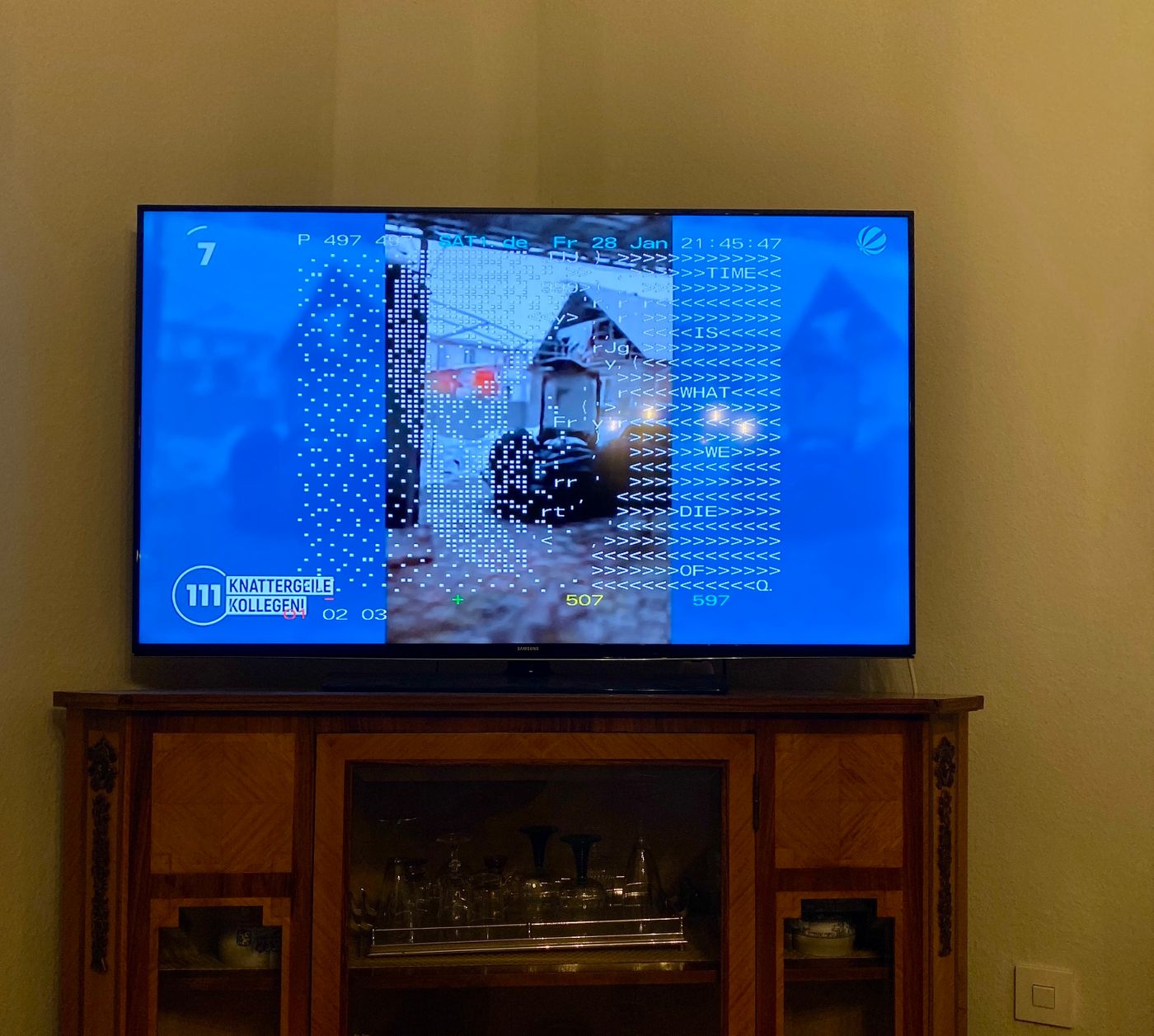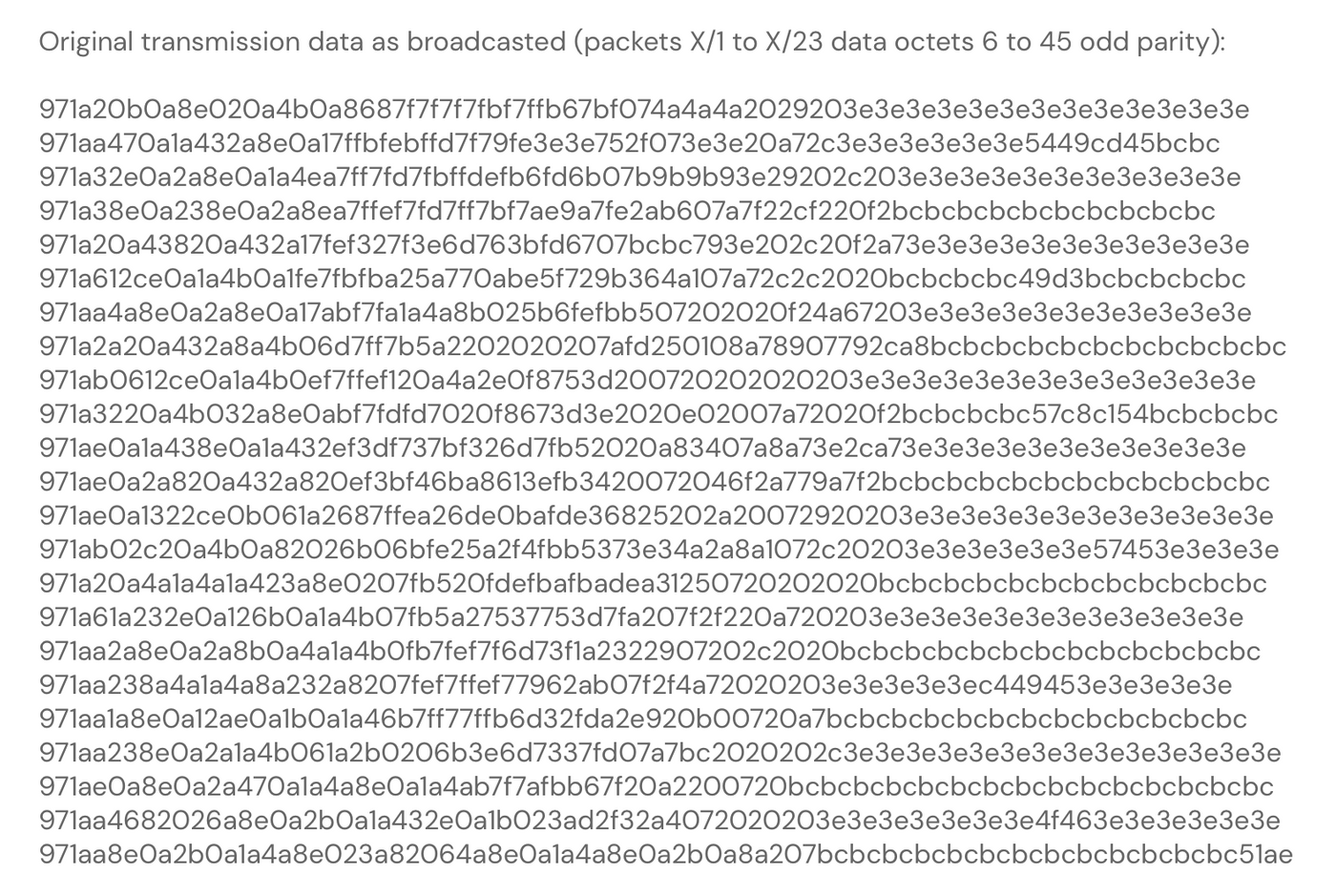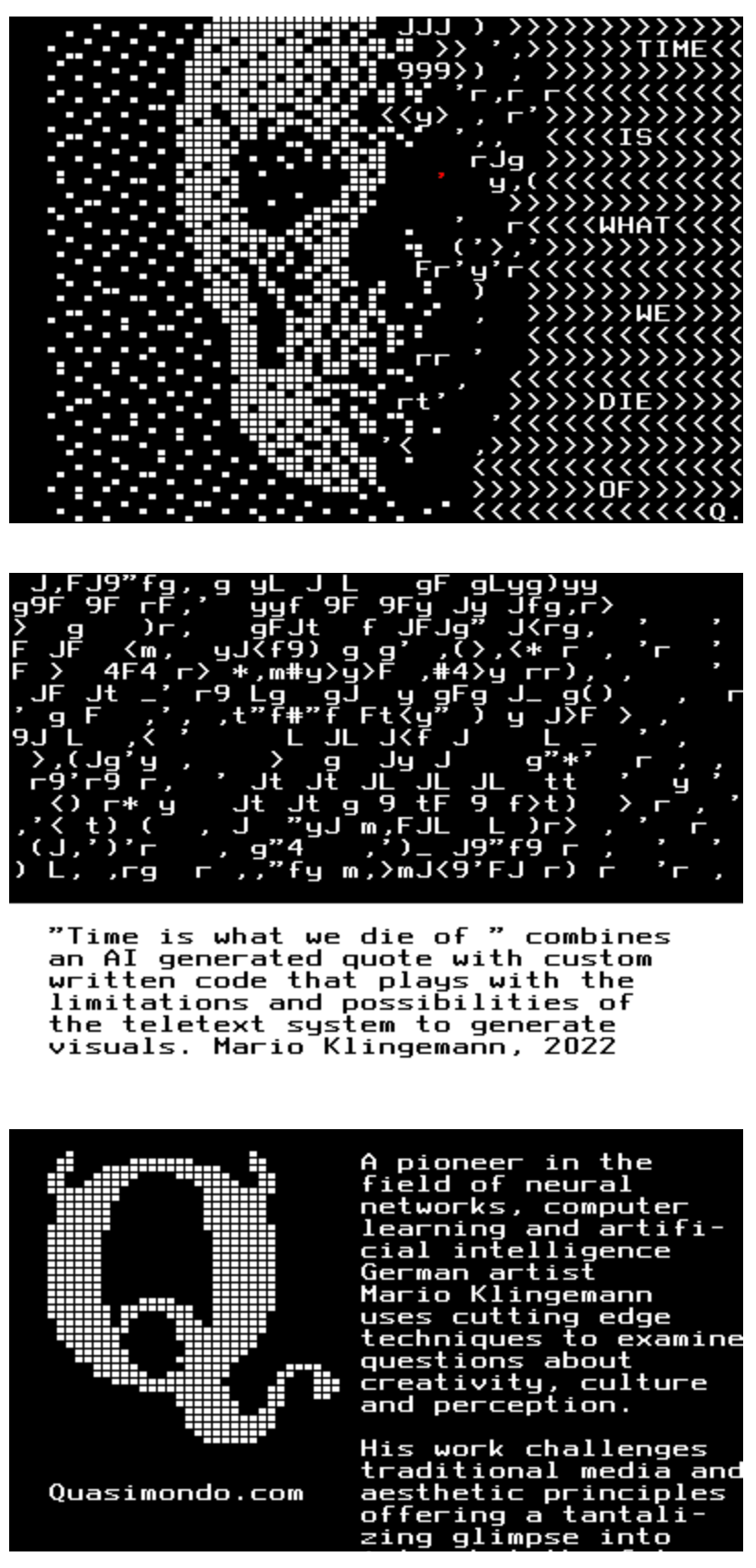Exhibition "TeleNFT" Projecting NFTs to Satellite TV Programs
Saw a super sexy NFT exhibition on Tezos in the early morning.
A group of German artists, through satellite TV, projected NFTs on the TVs of German households.

At this moment, as long as you happen to be in Germany, turn on the TV, and use the remote control stick to call out the hidden message in the TV signal, you can see the NFT artwork splendidly overlaid on the normal broadcast program.
Please refer to the picture.

When major 3C manufacturers are about to launch TVs that support NFT wallets, do you remember satellite TVs and decoders?
When humans are hyping pixel-style images in 2022, remember half a century ago, pixel art was the vanguard of tech art? That was an era that predates PTT.
The front page of "TeleNFT" uses the famous words of McLuhan, the pioneer of media studies: "The medium is the message". This book is also my desk bible.
TV is a hot medium, it brings a flood of information, makes you empty, and makes you happy;
On the other hand, if McLuhan is still alive, I think he will put NFT in the cold media, make you think, and make your heart feel infinite.
If nothing else, at least this Pixel Art NFT exhibition is so glamorous.

In the era of only satellite TV, how to hide the analog signal into the teletext information is a big problem, so there is the teletext technology (TeleText).
The TV station hides the text information in the horizontal scan lines of the TV program signal. As long as you have a decoder, you can map the text information.
Usually, the industry will put the program information into Teletext. Occasionally, someone will play images of poor quality, with a resolution of less than 100 times 100, and only six colors.
Teletext, once a hot medium, has long been replaced by cable TV, telephone lines, internet lines, 3G, 4G, 5G.
Munich-based tech artist Max Haarich (who is also an ambassador of the Art Nation, Užupis Republic) found fifteen well-known NFT artists to create TeleNFT, the most popular of which is AI artist Mario Klingemann (Quasimondo).
The TeleNFT theme discusses the impact of technological progress on the environment, economy and society. Every artist can only create with too few pixels.
These creations are exhibited in two ways, one is the satellite TV curation just mentioned, and the other is NFT. This batch of NFT works is produced using the ancient teletext software (the ancient version of the small painter), and is stored in the distributed storage system Arweave, of course, it is stored in text form. It's just a measly few horizontal scan lines after all.

The above text is a small excerpt from the broadcast signal.
TeleNFT surplus goes to environmental initiatives (same value as CleanNFT's Tezos)
Below are some of the works.
Mario's Time is what we die of , as always, uses machine-generated sentences to challenge the limits of Teletext, bringing artificial intelligence into the ancient telex technology.

Nissla made Too bored too right-click with the bored ape (BAYC) he held, the picture is a pixel monkey, right-click to download NFT.
Pixel artist Numo's WGMI (We Gonna Make It) brings cryptocurrency culture to satellite TV with his signature teddy bear.
Max Haarich himself painted Duxiang's fountain (urinal) , which compares the concept that everything is art and that digital assets are all NFTs.
Echoing WGMI, sp4ce uses WAGMI again to say with confidence that human beings can overcome climate change, war, and flu.
In addition, there are discussions on the black hole horizon ( M87 galaxy ), TV media domination ideology ( anti-Vietnam War ), German economic reflection ( automobile industry ), and generative art under maximalism.
After watching the whole exhibition, I unknowingly collected the complete set of works (one 5 tez is about NT$500).
This is an exhibition of concepts co-constructed by digital and analog. It does not appear in art museums. If you will, it exists in televisions, computers, and all screens, bringing the imagination of digital media.
Berlin is poor and sexy, and I think so is Germany, and so is Tezos culture.
That's why I love Tezos.
Finally, I would like to thank Lai Zongyun, who has never regretted the widening of his belt for NFT 24/7, for discovering this cool exhibition.
TeleNFT official website: https://teletext.de
German coverage of the exhibition: https://1e9.community/t/telenft-als-pixelkunst-erobern-nfts-jetzt-auch-den-teletext/16624
Like my work? Don't forget to support and clap, let me know that you are with me on the road of creation. Keep this enthusiasm together!




- Author
- More